Search
Search Results

Image
Chariot Panel, Arch of Titus
A panel from the Triumphal Arch of Titus, erected in c. 81 CE by Domitian to commemorate his brother Titus' campaigns in the Jewish War (70-71 CE). The relief shows Titus riding a chariot and being crowned by Victory. Forum Romanum, Rome.
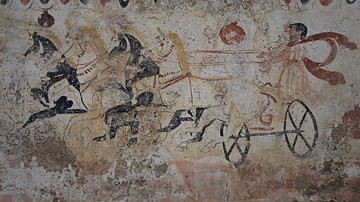
Image
Lucanian Fresco of a Chariot Race
Fresco from a Lucanian tomb depicting a chariot race. From the Necropolis of Gaudo, 340-330 BCE.
Paestum Archaeological Museum, Italy.
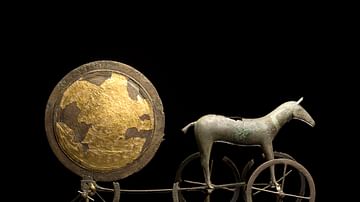
Image
The Trundholm Sun Chariot
The Trundholm sun chariot, 1400 BCE.
National Museum of Denmark, Copenhagen.
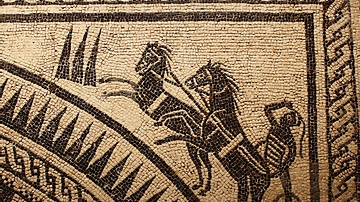
Image
Chariot Racer Mosaic, Tarentum
A detail from a floor mosaic depicting a chariot racer, Tarentum, southern Italy, Late 2nd century CE. (National Archaeological Museum of Taranto, Italy)
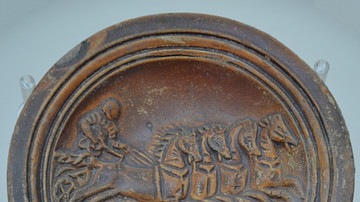
Image
Oil Lamp with a Chariot Scene
Oil lamp decorated with a four-horsed chariot at speed. Made in Italy, c. 40-70 CE.
The British Museum, London.

Image
Greek Chariot Racers
Greek chariot racers from the base of a funerary kouros, later included in the Themistokleian Wall of Athens. 510-500 BCE. (National Archaeological Museum, Athens)
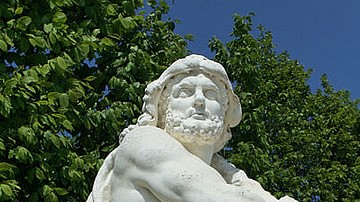
Article
The Shield of Heracles: The Complete Poem
The Shield of Heracles (also known as The Shield of Herakles and, in the original, Aspis Herakleous) is a poem of 480 hexameter lines written by an unknown Greek poet in the style of Hesiod (lived 8th century BCE). It deals with the Greek...

Image
Mosaic with Chariot-Racing Scene
Roman mosaic depicting a quadriga of the factio russata (‘the Reds,’ representing the summer), 3rd century CE, from Rome.
National Archaeological Museum of Spain, Madrid.
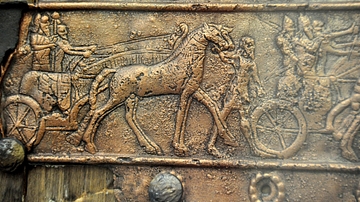
Image
Royal Chariot from Balawat Gate
Detail of the bronze casing of the Balawat gate. From Balawat (Imgur-Enlil), northern Mesopotamia, Iraq. Neo-Assyrian Period, reign of King Shalmaneser III, 858-824 BCE. (Ancient Orient Museum/Istanbul Archaeological Museums, Istanbul, Turkey...
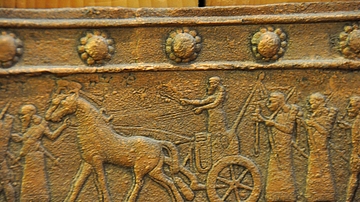
Image
Chariot, Balawat Gate
Detail of the bronze casing of the Balawat gate. From Balawat (Imgur-Enlil), northern Mesopotamia, Iraq. Neo-Assyrian Period, reign of King Shalmaneser III, 858-824 BCE. (The British Museum, London)